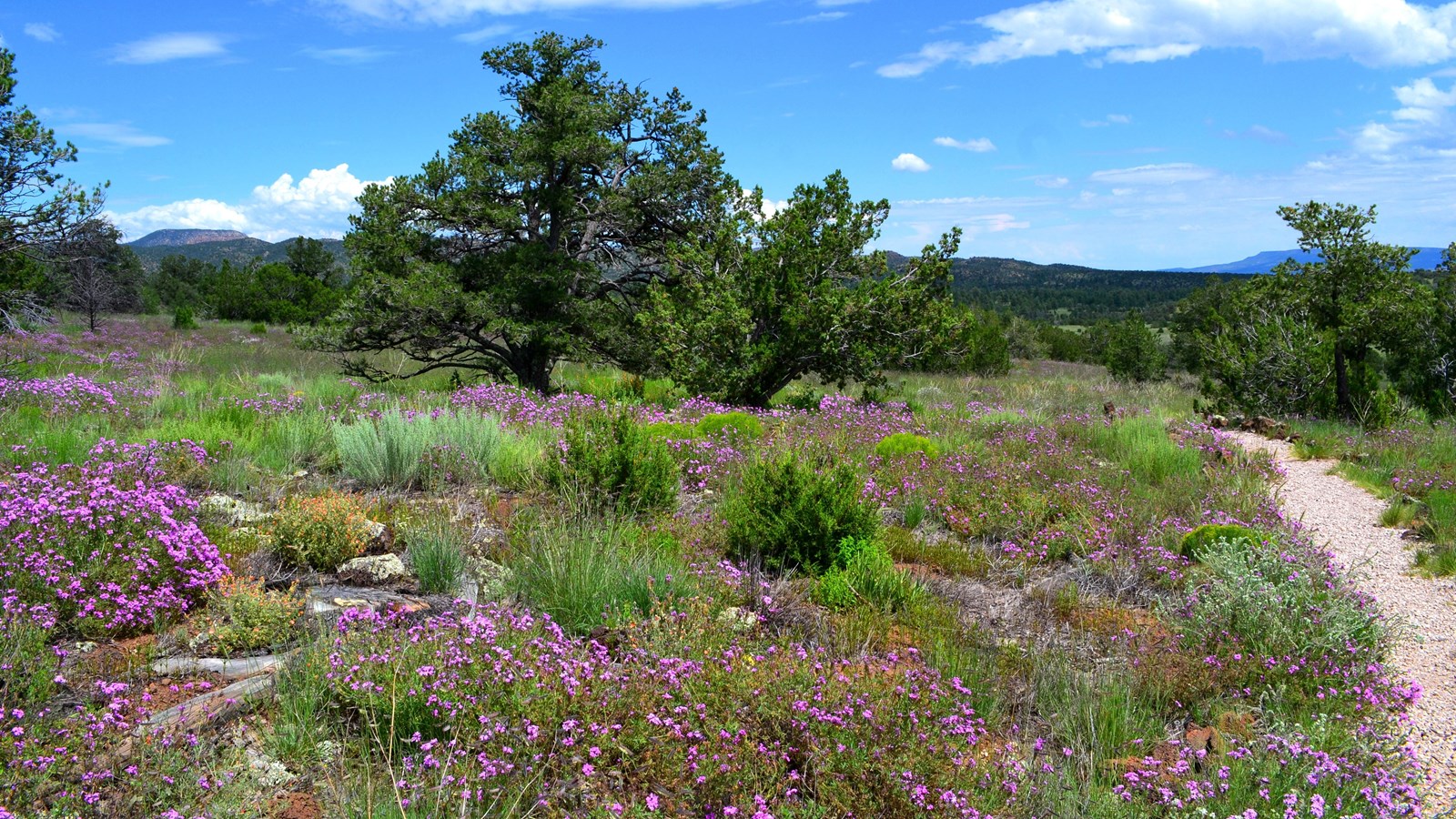Last updated: April 16, 2022
Place
El Calderon Area Trailhead

NPS Photo
Grill, Information Kiosk/Bulletin Board, Parking - Auto, Picnic Table, Toilet - Vault/Composting, Trash/Litter Receptacles
Exploring El Calderon
The El Calderon Area Trailhead marks the beginning of a well marked, easy to moderate difficulty hike. The trail crosses the oldest lava flow at El Malpais National Monument and passes by several lava tube cave entrances on the way to the summit of a cinder cone volcano. Picnic benches and a pit toilet are available at the trailhead.
Geology In Motion
The processes of geology are usually so slow that they cannot be measured in a human lifetime. Occasionally, we can see the effects of erosion or other processes after a good rain or high spring winds, but these are exceptions. However, there are some events that happen so quickly their effects can be seen immediately. Volcanic eruptions are one of these events.
In 1943 near Parícutin, Mexico, a farmer noticed a crack in one of his fields sending out gas and ash. Less than ten years later, a cinder cone 1,200 feet (365 m) high towered over the field. El Calderon Cinder Cone would have had a similar beginning when it was formed somewhere between 30,000 to 60,000 years ago.
A volcanic vent shot cinders hundreds of feet into the air, creating the cinder cone you see today. Rivers of molten rock created lava trenches and lava tubes. Since then, the changes have been less dramatic. A combination of vegetation and erosion slowly break down lava into smaller particles. Eventually, the area is transformed from a blackened landscape to the forested land you see today.
Signs of Life
The seasons bring an ever changing array of life to the El Calderon trail. In the spring, look for piñon jays and the occasional snake or lizard basking in the sun. Summer brings warmer temperatures, insects, and several species of bats that can be seen chasing after the insects from Bat Cave. As summer progresses and monsoon rains fall, wildflowers blanket the ground. Fall is a good time to spot deer, elk, and other animals foraging for food. During winter, prints from coyotes, bobcats, rabbits, and other animals are easy to spot on freshly fallen snow.
